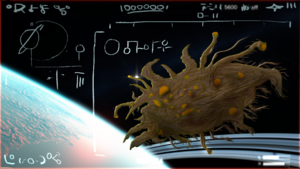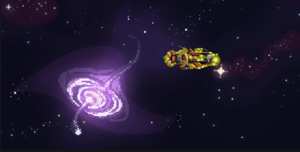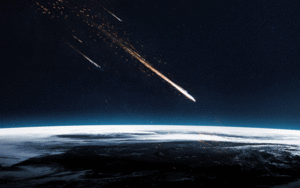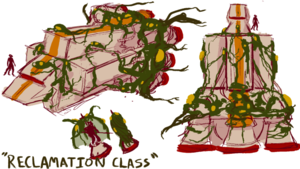Dionae History
| Dionae Lore Pages | ||
|---|---|---|
| Species | Dionae · Dionae Forms · Dionae Mindtypes · Dionae Biology · Dionae Out-Of-Character | |
| Locations, Planets & Systems | Covenant of Xrim · Hieroaetheria · Rueltab · Primitive Sirens of Mictlan · Eternal Gardens | |
| Conglomerates & Factions | Dionae in the Federation · Dionae in the Hegemony · Vaurcae & Dionae · The Narrows · Minor Dionae Factions | |
| Culture, History & Society | Dionae Culture · Notable Dionae · Voidic Proto-Culture · Dionae Space Capabilities · Dionae History · Dionae Integration · The Eternal | |
| Lore Arcs | Omnivirate's Providence | |
History
The Dionae are a cryptic species, and have been discovered through-out the Orion Spur. Their history is unlike any other species across the Orion Spur, with various different perspectives of each discovery. Many say that their history goes back further, before the species across the Orion Spur were even capable of ascending to the stars. Whilst there is overwhelming evidence in regards to this theory, there are discoveries that occur that give the theory more credibility each time.
Skrell-Dionae History
First Discovery
One can speculate that Dionae were originally discovered by Skrell Prospectors on an arctic planetoid orbiting the Xelp system. The Skrell Prospectors were originally sent to Xelp III
to locate minerals that would be used for the reconstruction of Qerrbalak, but instead stumbled upon unique mineral surrounded by organic weeds, this mineral was later found to be Ambergris, leading to the ‘Ambergris Rush’ of the 2220s, where hundreds if not thousands of Skrell dedicated their time and energy to searching for more of this rare mineral. The rush would last until 2232 CE - when Skrell Prospectors could no longer locate Ambergris. It is suspected that during this period the Skrell had slaughtered what is now known as an Echion Colossus.
Skrell Discovery
The first documented discovery of Dionae occurred in 2247 CE. The JVSS Lu-Wahoq noted there was an inconsistency with data taken from a scan of the Kelo’Hen system. The inconsistency was soon labelled an astronomical anomaly, after they had discovered a large celestial object orbiting Kelo-Hen IIa, which seemed to be exhibiting flora-like properties. The JVSS Lu-Wahoq was ordered to probe and investigate the anomaly, which they soon did. There has been a debate on exactly what happened next, however, one thing can be agreed upon - The JVSS Lu-Wahoq was destroyed shortly after commencing the investigation.
It sent shockwaves throughout the Jargon Federation - many fearing that Glorsh-Omega had returned only shortly after its disappearance to continue its tyrannical reign. The Jargon Federation dispatched a Search & Rescue team - alongside with two Cruisers. When they had entered the Kelo’Hen System, they were welcomed by an overgrown derelict, filled with what seemed to be some kind of flora. The Search & Rescue Team suited themselves with EVA Gear, and ensured they were armed before going out to investigate the now derelict JVSS Lu-Wahoq'.
The investigative team soon entered, discovery with what seems to be an empty vessel. There were multiple hull breaches, and much of the team had come to terms that they’d likely discover the deceased crew - but there was not even a body onboard. Venturing further, they stumbled on some of the growth that had seemed to have formed a two smaller spherical bulbs, and one large one. Samples were taken, and they continued to investigate. After the investigation was concluded, and ultimately deemed that the JVSS Lu-Wahoq was simply an anomaly itself - no one could understand what had happened to the corpses of the crew.
It was only once aboard the Search & Rescue Vessel that the team had stumbled on what seems to have been a part of the growth - a small worm-like creature had managed to stowaway with the EVA Gear, and had begun to chirp a song before making some incoherent sentences in Nral’Malik. The team was intrigued, and as soon as they possibly could, they returned to the nearest suitable Federation planet to allow the small creature to be studied.
The project was kept confidential, the JVSS Lu-Wahoq was covered up and cited to have been destroyed after a solar flare event had decimated the vessel - and it was lost to the void. A choice team of Biologists, Researchers and Linguists had been chosen to help investigate the creature - taking over four years before any breakthroughs had occurred. It was Linguistics Professor, Doctor Xuq’mqix Volq, that had managed to decipher the unknown language spoken by the creature. The Professor had successfully constructed a device similar to what could only be described as an Enigma Machine by Humans - which still exists today, and has been used to help decipher languages such as Sinta’Unathi, Siik’Maas and Vaurcaesian.
The creature was soon able to communicate with the Skrell team, explaining everything that had occurred on the JVSS Lu-Wahoq - from the attack on the vessel after it had provoked the collective cluster of the species to when they had assimilated the deceased and had truly begun to understand that they never intended to hurt the cluster. The creature was soon labelled as Dionae Primis, after a similar species on Qerrbalak that attacked the native fauna. Multiple conversations would occur for almost a year, before they would return with Professor Xuq’mqix to the Kelo’Hen System. The device constructed would allow for a conversation to be held - and if it were to fail, they had the Dionae Primis still with them to assist.
The Kelo’Hen System anomaly was soon contacted, and after a series of diplomatic talks, they were brought to the Nralakk System - where they remain today. After numerous years spent studying and conversing with the cluster, they began to slowly be integrated into Skrell Society. The cluster was soon nicknamed the Conglomerated Choir of Nralakk, due the almost serene songs that could be heard originating from the cluster.
Skrell Aftermath
After the species was declassified, it sent a shockwave through Skrell Society. Some believed the species to want to harm them, whilst others believed them to be a symbol that Oernabi truly did exist - further allowing the creation of the Dienabi Religion, and largely others were just excited that a new sapient species had been discovered, especially a species capable of helping them during the reconstruction period. Dionae labour was first used in 2263 CE, mostly in assistance with reconstructing the majority of the terrestrial cities.
Dionae and Skrell have since formed a bond inseparable by almost anything. Dionae assist the Skrell in exchange for safe passage and havens in which they can grow and produce more Dionae. More information on this cluster can be found here. Dionae from the Nralakk Cluster are typically menial workers, but there have been some noted to have achieved various degrees similar to Skrell.
Another byproduct of this relationship is an order to destroy a theoretical form of the Dionae, noted to as a Titan, due to the inherent risk of intelligence singularity and other classified risks.
Human-Dionae History
First Discovery
Humanity first discovered the Dionae within the Weeping Stars Region in 2281 CE, during the First Interstellar War between the Coalition of Colonies and Solarian Alliance. Solarian Cruisers noted to have discovered the derelict Battleship, the SAMV Leviathan, near where one of the war’s most deadly interstellar assault had occurred, The Battle of the Binary. The SAMV Leviathan was noted to have an abnormal breach - not caused by any known form of weaponry at the time. Initially, many thought that the Coalition of Colonies had somehow managed to create an all-powerful weapon, but upon further investigation noted an unknown growth located on the inner port side hull - being Soldiers, they had just assumed it was a nest of space fauna of some sort that had begun to use the vessel as breeding grounds. Nothing much else was noted, and there was never any official investigation into the matter. The SAMV Leviathan was never seen again, and was suspected to have been swallowed by the Red Giant it orbited.
Human Discovery
A decade after Humanity had been discovered by the Skrell, a joint Human-Skrell exploratory fleet had been put into service for the sole reason to strengthen relations as well as to search for other sapient life. The fleet had been alerted to an inconsistency, similar to that found in 2247 CE within the Kelo’Hen system. The Skrell Researchers notified the Human counterpart of the possible discovery of a new cluster - exciting both species. When the fleet had entered the Rueltab System on July 18th 2342, not only was the inconsistency proved to be a cluster, but it was on a much smaller scale than that discovered in the Kelo’Hen System.
The Fleet manoeuvred to be relatively close to the cluster, however, the Skrell warned to keep a distance if they turned hostile. The Xuq Machine created almost two centuries early by Professor Xuq’mqix was implemented in almost every Science Vessel that had been constructed post-reconstruction era. Whilst configuring the machine, the cluster suddenly moved through space - many onlookers saying it was almost as if it was capable of manipulating the void to its will. The SASV (Solarian Alliance Science Vessel) Ophion was the first target, the cluster caused multiple hull breaches, and ultimately caused the overload of the warp engine, leading to an explosion that acted as an EMP to any ships within a kilometre of the explosion. Majority of the fleet has been disabled, and those left capable of fleeing did so. The Cluster was noted to be hostile, and in the following weeks after the Rueltab Incident, more and more Researchers pushed to continue investigating the Cluster finally getting their wish six months later.
Another Skrell and Human joint exploratory fleet was sent to investigate, however, the fleet had been outfitted with a unique chemical weapon, later discovered to have been created by the Skrell in the unlikely event that the Nrallak Cluster had begun to act hostile. The fleet approached what seemed to be a graveyard of the previous, slowly and carefully manoeuvring between the large derelicts to locate the SASV Ophion. Once they reached the vessel, it was clear that the Cluster had made it their new home - the entire Ophion was covered in Dionae, from bow to stern. Again, the Skrell had begun to configure the Xuq Machine, when the cluster attempted to attack - however it was rendered futile, as the chemical weapon was fired into the attacking force forcing them to retreat to recuperate. It was during this period of recuperation that the Skrell finally managed to begin diplomatic talks with the Cluster.
The talks continued for over a month, with a blockade being put in the surrounding systems to prevent anyone from entering besides authorised vessels. Many of the deceased crew aboard the SAMV Ophion were assimilated by the Cluster, and soon enough the Xuq Machine was no longer required and they began to converse in rudimentary Sol Common with Human Researchers. The Dionae from the Ophion Cluster were deemed the property of the Solarian Alliance - considering the Rueltab System was located within the Outer Ring Sector - and so were declared to pay off their debts to Solarian Society in the form of menial labour. Many Dionae were put to work for the Alliance, mostly with mining and construction. Dionae from the Ophion are only allowed to leave the Solarian Alliance after paying for their actions - which typically can take up to a decade to do so.
Human Aftermath
The tragedy of the Ophion is still spoken about in the present, and many Solarians find themselves either out-right hating Dionae and showing it, or just ignoring their presence flat out. Every year on July 18th there is a memorial held for the hundreds of crew that lost their lives in the Rueltab Incident, coinciding with the memorial there is typically a spike of deceased Dionae located the next day. Dionae from the Ophion Cluster are typically menial workers, and this should be reflected on Station; Mining or Engineering should be the two departments chosen.
Shortly after the Rueltab Incident, many were sent to New Gibson, to strip mine the planet - and assist in developing it as a major-industrial powerhouse in the Middle-Ring of the Solarian Alliance. Their survival only being guaranteed by the various electronics designed to provide light, and the majority of the radioactive waste produced on New Gibson being sent to the sizable community.
Those who had paid their debt to the Solarians resettled themselves to Biesel - eventually leading to the commencement of the construction of the Eternal Temple in 2362 CE. It became a beacon for all Dionae, to continue to strive and work hard for the eventual taste of freedom. It took nearly sixty years for the Temple to be completed, finally being unveiled as a whole in 2431 CE. Connected to the Blossoms Beyond was one of the first to resettle, being granted rights to a rather large piece of land considered to not be of any value to the Solarian Alliance, which would eventually become the one of the largest community of Dionae a century later.
Unathi-Dionae History
First Discovery
Unathi around the Northern Hemisphere of Moghes would have seen almost a hundred different meteors descend from the skies in early 2451 CE - most admiring the beauty of such a rare sight in the horrific conditions of the Wasteland. The Unathi did not consider that these were, in fact, hundreds of Dionae seeds entering Moghes atmosphere. It is unknown how the hundreds of seeds had not been seen before, but many have speculated that it was either a Solarian or Jargon vessel that had delivered a payload of the Dionae to assist with pushing back the growing wastelands on Moghes, however, it is still unknown.
Unathi Discovery
Unathi first discovered the Dionae several months after the meteorite shower, in an area that was previously just a large crater with an irradiated lake in the centre - but it was now what seemed to be some kind of Oasis. The Unathi couldn’t believe their eyes, many praising their ancestors for the gifts that had been brought upon them, more rushing up to the now lush dunes.
Hundreds of Unathi that had been wandering the wastelands stumbled on these spots, all had previously been some kind of crater but was now an Oasis in which they could thrive. Many began to take back the wastelands in these areas - settling their tribes in these newfound areas of life.
They began to investigate more, wondering if these were simple miracles, or if perhaps there was something behind the sudden spring of life into the wasteland. What they discovered shocked them even more - dozens of little worm-like creatures would disappear across the wastelands during the day, but suddenly would converge on the Unathi huts with various fires and such going. The Unathi began to slowly understand that these creatures were behind the wasteland’s restoration and realised that these creatures needed light or they’d perish. It took months before any of them could understand - Only after feeding on numerous corpses deep beneath the dunes of the wasteland did the Dionae begin to understand the Unathi and what they had to say.
The new-found relationship between the Unathi and Dionae prospered. In exchange for revitalizing the Wasteland, the Dionae would be sheltered within the confines of the Unathi huts when nightfall would begin and during the day they were expected to continue their efforts in providing a new home for the Unathi.
Unathi Aftermath
They live in a state of symbiosis with the Dionae, which clears the radiation from their crops. They are agricultural experts, capable of farming even in the wastes. The food produced from these are used to feed both themselves and their animal companions. The larger villages plant huge swathes of dionae pods, which either get used to absorb the radiation in the surrounding area, or sent to new settlements to give them a headstart on the minute terraforming procedures. The more land that gets terraformed, the more crops that get planted, and the more biomass the Dionae have available. The most well-known relationship between Dionae and Unathi in the Wastelands belongs to Clan Dorviza.
Recent History
In recent times, the species has undergone massive advancements. Not only have they integrated into most societies across the Orion Spur - but have even begun expanding their reaches and colonising planets themselves. The most recent of which is Epsilon Ursae Minoris, where a colony was found by Skrell probes in the early 2420s. Such a discovery rocked the galactic community, and prompted intergalactic responses as many flocked to the planet in order to study it. Now, almost four decades later, the planet could be considered mildly developed. The constant plague of pirates has prompted the development of a Navy capable of fighting them off - and so Epsilon Ursae Minoris has developed the Flotilla, a defensive force capable of dispatching strikers to hold back the vile thieves.












